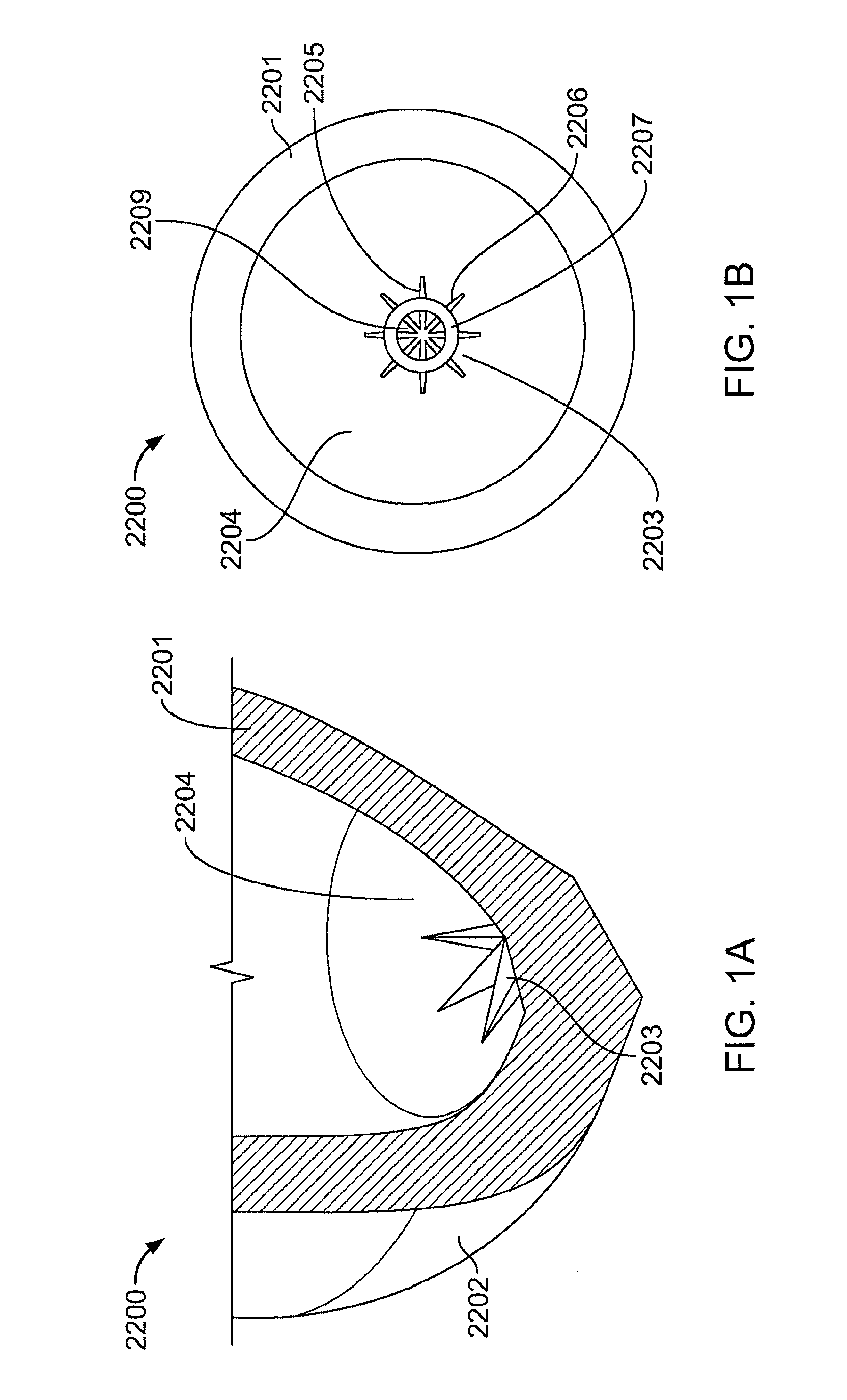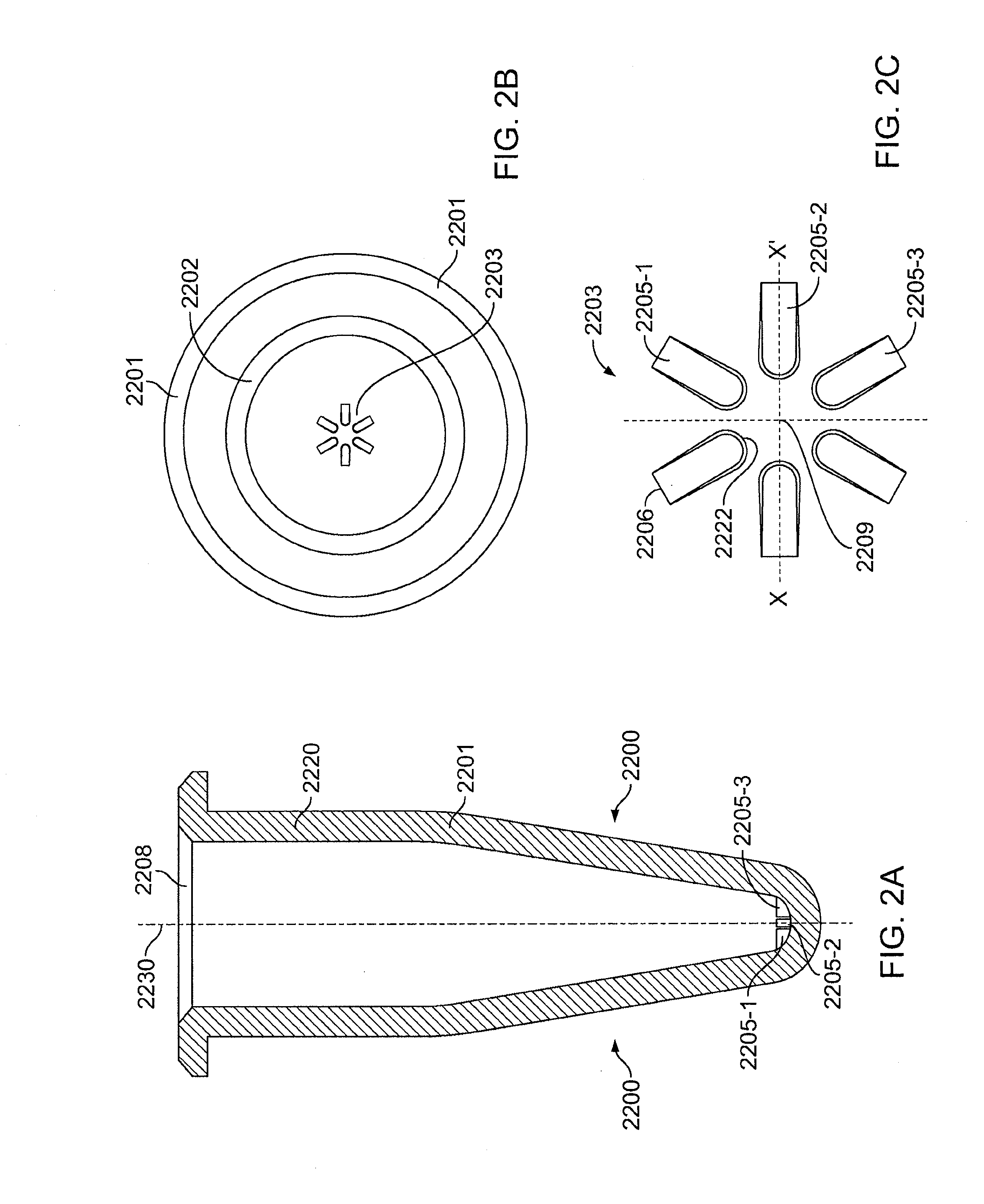Reagent tube
a technology of reagent tubes and reagents, applied in the field of reagent tubes, can solve the problems of high cost and only operable by trained clinicians, many diagnostic analyses can only be done with highly specialist equipment, incur shipping costs and transportation delays,
- Summary
- Abstract
- Description
- Claims
- Application Information
AI Technical Summary
Benefits of technology
Problems solved by technology
Method used
Image
Examples
example 1
Reagent Tube
[0058]An exemplary reagent tube, showing various dimensions, is shown in FIGS. 4A-4D. Tolerances on the shown dimensions, during manufacture, are as follows: features≦0.5 inches are machined to within±0.010 inches; features<0.5 inches are machined to within±0.005 inches; feature locations, such as theoretical center points and theoretical center lines, are within±0.010 inches of those shown in the drawings. It is to be understood that dimensions can also be represented in their metric system equivalents without departing from the scope of the technology herein.
[0059]The cross-hatch area shown on the upper portion of the tube in FIG. 4C is an area on which a marking may be made, such as during manufacture, for the purpose of indicating product origin, identifying the batch, or for quality control.
[0060]The pattern of ridges shown in FIG. 4D is such that each ridge comprise a rectangular portion capped by a semi-circular arc, the semi-circular arc being disposed close to t...
example 2
Foil Piercing and Dissolution of Lyophilized Reagents
[0064]The containers of lyophilized reagents provided in conjunction with a holder as described herein are typically sealed by a non-plasticized aluminum foil. Aluminum foil bursts into an irregular polygonal pattern when pierced through a pipette and leaves an air vent even though the pipette is moved to the bottom of the tube. In order to save on reagents, it is desirable to dissolve the reagents and maximize the amount withdrawn from the tube. To accomplish this, a ridged-star (stellated) pattern is placed at the bottom of the container to maximize liquid volume withdrawn, and flow velocity in between the ridges.
[0065]Exemplary steps for dissolving solid particles, and withdrawing fluid are as follows:[0066]1. Pierce through the pipette and dispense the fluid away from the lyophilized material. If the pipette goes below the level of the lyophilized material, it will go into the pipette and may cause jamming of the liquid flow o...
PUM
 Login to View More
Login to View More Abstract
Description
Claims
Application Information
 Login to View More
Login to View More - R&D
- Intellectual Property
- Life Sciences
- Materials
- Tech Scout
- Unparalleled Data Quality
- Higher Quality Content
- 60% Fewer Hallucinations
Browse by: Latest US Patents, China's latest patents, Technical Efficacy Thesaurus, Application Domain, Technology Topic, Popular Technical Reports.
© 2025 PatSnap. All rights reserved.Legal|Privacy policy|Modern Slavery Act Transparency Statement|Sitemap|About US| Contact US: help@patsnap.com



